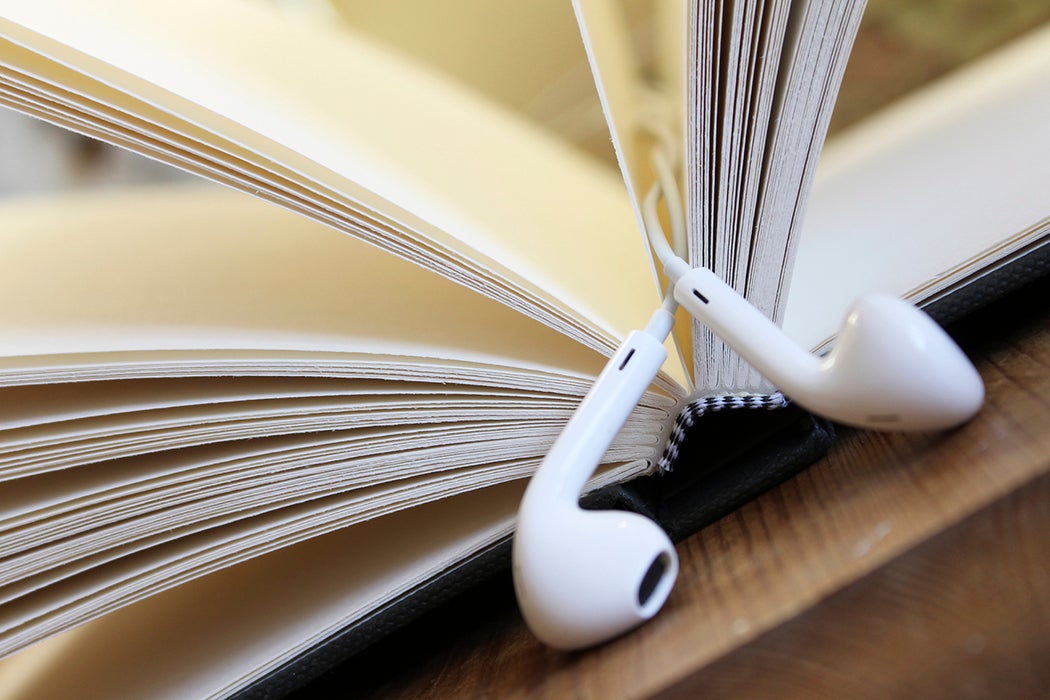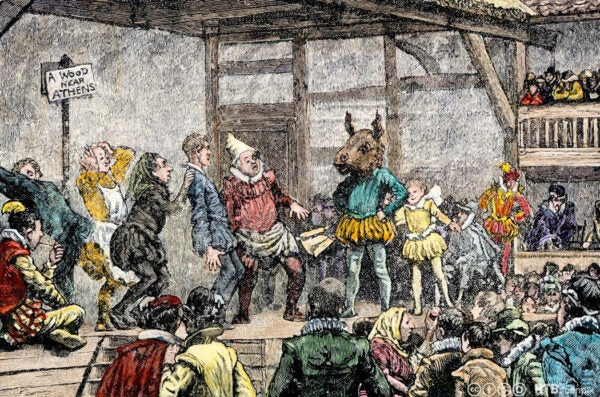For many years, audiobooks—also known as talking books and, later, books on tape—struggled for literary legitimacy. As the scholar Matthew Rubery reports in his new book, The Untold Story of the Talking Book (Harvard University Press), audiobooks have been cast as the Rodney Dangerfield of literature—they get no respect! The essence of the dispute concerns whether listening really counts as reading.
Rubery’s book examines how the production and distribution of audiobooks has shaped their reception, which is especially interesting now that the format is finally booming. In the past six months, audiobooks became “the fastest-growing format in the book business,” the Wall Street Journal reported. The New York Times reported that although publishing revenue was down in the first quarter of 2016, sales of digital audio rose by 35.3 percent. And the number of audiobook titles increased by nearly 400 percent between 2011 and 2015. E-books, by comparison, are down in 2016, as are adult hardcovers (i.e., printed books from commercial publishers, not including religious or university press titles). Which prompts the question: Do these statistics herald audio as the preferred reading format of the future?
In 1934, the Library of Congress launched the first talking books program after Congress approved funding through the Books for the Adult Blind Project. There was opposition from the beginning—from groups who felt the money would be better used to publish more books in braille, even though fewer than 20 percent of visually impaired people could read braille; from critics who charged that listening was “a lazy man’s way of reading”; and even, startlingly, from authors like Willa Cather who refused to allow her books to be reproduced in audio, calling it “very distasteful.” Title selection was another fraught topic, as was the best way for a narrator to read aloud. Some listeners preferred books to be read straight, absent any hint of drama or interpretation, while others enjoyed hearing the elocution a professional could provide.
It was evident, however, that “a new medium of reading” had arrived, as Edward M. Peterson, chairman of the American Library Association Committee on Work with the Blind, put it in a 1934 article on “The Talking Book.” He was optimistic. “Through careful study, librarians will develop ways and means of widely extending the use of talking books as aid to inkprint literature, in their work of bringing knowledge, study, culture, and pleasure to any individual who seeks them,” he wrote.
At first, recorded books were not widely available, largely due to the cost of producing records and players, but also because copyright concerns limited their distribution to the sightless exclusively, which had the unintentional consequence of stigmatizing the new medium. The U.K. established a program similar to the Library of Congress’s, also geared toward the blind and partially sighted, with particular emphasis on veterans whose vision had been damaged during World War I. It wasn’t until 1952, when Caedmon Audio released its LP of Dylan Thomas reading “A Child’s Christmas in Wales” that any attempt was made to broaden the market. Caedmon’s record sought to restyle spoken-word recordings as a form of entertainment suitable for all.
While Caedmon had some success with this rebranding effort, the real shift toward mainstream acceptance of the audio format began in 1975 with books on tape. Appealing primarily to commuters, books on tape spun the whole “lazy man’s way of reading” claim by suggesting that its consumers were so busy, they had to multitask to make time for reading. As the scholar Helen Aron found in her 1992 survey, those who enjoyed listening to books on cassette skewed male, middle-aged, highly educated, above average income, with long commutes. They also enjoyed reading printed books, using audio only as “an adjunct to reading.”
Aron concluded that “[b]ooks on audiocassette are not contributing to the dumbing down of America.” And despite the profound cultural anxiety about non-book books, some librarians and educators were beginning to recognize the perks of this burgeoning medium.
When the education scholar Gene Wolfson revisited audiobook use in the classroom in 2008, he observed that audiobooks teach critical listening, improve vocabulary, and increase comprehension and appreciation of the written word, especially for “reluctant readers,” students for whom English is a second language, and those with visual impairments. Wolfson cited a study on incorporating audiobooks into the literacy program at two middle schools, where the results showed “improved reading scores for four successive years.”
Further, the scholar Jessica E. Moyer analyzed audiobooks and adolescents, finding that teens aren’t necessarily reading less than they did in the past. Instead, they are choosing to read in different formats. The fact that those who track this information have not historically considered audiobooks or e-books “real” reading is part of the problem. “[E]ducators, policymakers, and governmental agencies need to move beyond traditional genres like the NEA categories of fiction, biographies, drama, and poetry and modernize their definitions of reading to account for the emergence of multimodal hybrid formats,” she writes.
From this vantage point, it looks as if audiobooks have been held back by a persistent pro-print agenda. Even as evidence mounts that consuming books in audio is highly beneficial to students, the shame remains. It is a feeling shared by philosophy professor William Irwin, who wrote in 2009, “I hide my audio habit because most of my colleagues, and even some of my snobbier students, regard audiobooks as a sign of an impending dark age of mass illiteracy.”
The upsurge in audiobooks and podcasts illustrates our heightened interest, perhaps even our preference, for digital storytelling. There are many reasons to support this partiality. “Listening to authors read their own memoirs introduces an intimacy that cannot be achieved without the audio,” writes Amy Harmon.
Rubery’s book acknowledges what he missed as a print-only reader: “Only in retrospect have I realized how much was missing from my first encounters with great literature. A few examples: the Yorkshire dialect in Wuthering Heights came across as gibberish to me, the French in Vanity Fair was opaque, and I had no idea what the Mozart aria hummed by Leopold Bloom throughout Ulysses actually sounded like.” In addition, skillful performances, whether by a celebrity or a professional reader, can be uplifting. In an audio interview with WNYC, award-winning narrator Barbara Rosenblat said: “A gifted audio book recording artist can elevate less-than-stellar writing to someplace very new.” (In fact, publishers are placing more emphasis on performance in their marketing pitches.) Audiobooks are also metamorphosing into an independent art form, with full or multi-cast productions, music, and sound effects—enhancements that, for some readers, can bring a text to life in a way that the silent consumption of print cannot.
It’s a pattern in media history to fault a new medium for unseating its predecessor, and the printed book has long enjoyed a “privileged standing,” Rubery writes. The printed book, however, was once blamed for the demise of manuscript culture, which was itself accused of obliterating oral literacy. In this sense, it is tempting to think of the rise of audio as a full-circle moment in the history of literature. As Irwin (the philosopher) noted: “The best, most authentic way to experience the Odyssey and Beowulf, for example, might be to have them sung in the original languages with lyre accompaniment. But second best might be listening to them on audio.”







